Birds face many dangers and challenges in the modern world. Many of the things we can control as individuals in our own yards and life choices, but many of these challenges require a societal response, too.
Some of these issues are addressed elsewhere on this website. Or, in the case of habitat loss, is the focus of this entire website! Native plants are crucial for bird conservation!
Challenges birds face:
- Cats – One of the most significant challenges to birds! Keep cats inside!!
- Climate change
- Windows
- How we created our DIY Acopian BirdSaver installation
- Other examples of BirdSavers we’ve seen
- Pesticides and other toxic chemicals
- Sun coffee plantations instead of traditional shade coffee plantations
- Avian competitors, both native and non-native
- Diseases
- Light pollution (below)
- Heat (below)
- Open pipes (below)
- Glue traps (below)
- Non-native plants (below)
- Lead sinkers (below)
Light pollution
How much night has changed in the last 100 years! This may make people happy, but it’s a disaster for wildlife (and even for plants).
Light pollution in our cities seriously affects birds during migration, steering them off course and causing them to crash into buildings. It can affect the timing of their migration, leading to mismatches between available food and their arrival. It also can affect nocturnal birds who hunt at night.
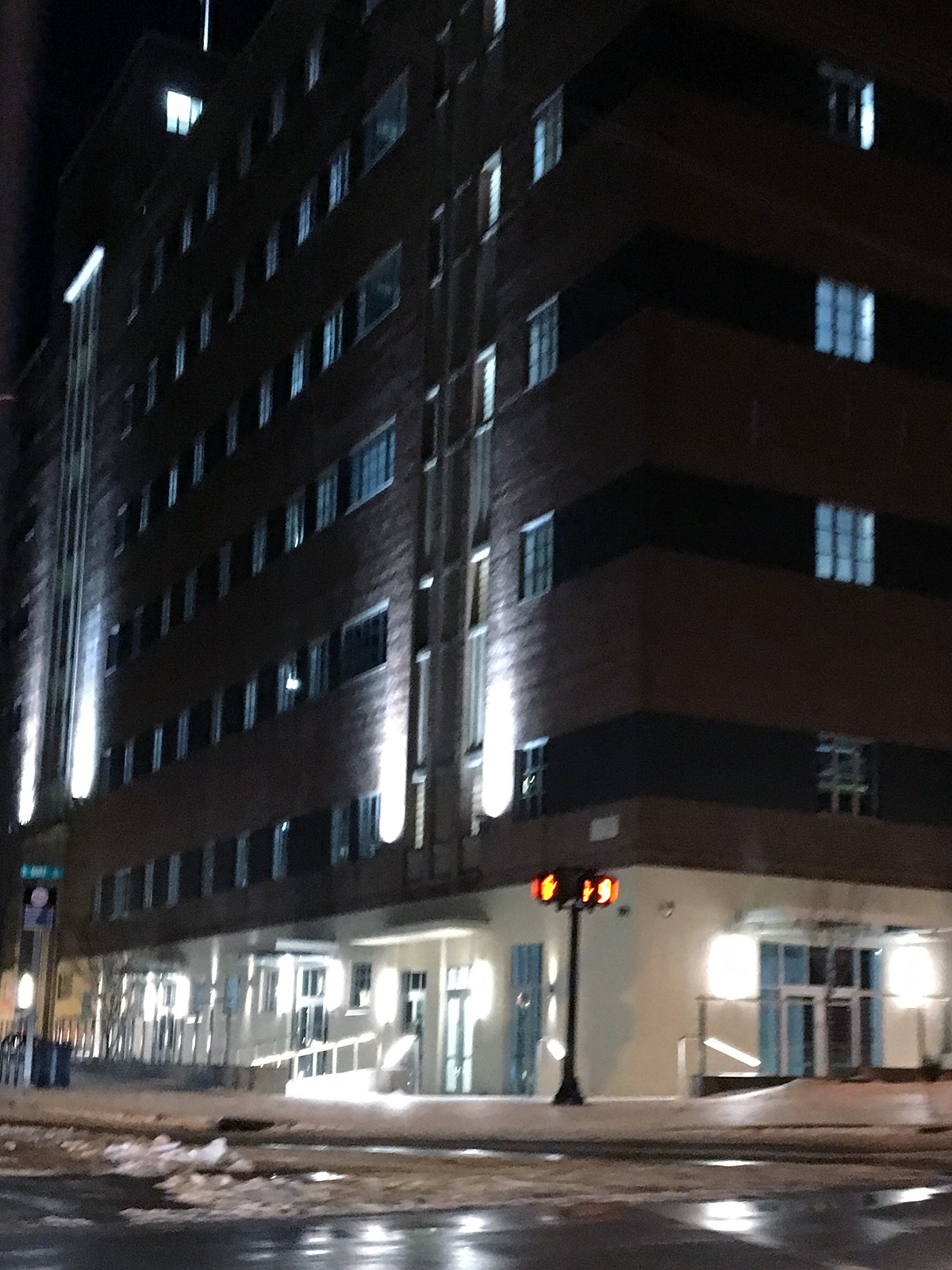
What can we do? In our own yards, we can forgo the decorative use of light, washing walls with light, highlighting trees, spotlighting architecture, and so forth. Some lighting may be necessary for safety (and can often just be accomplished by using motion detectors), but much of it is just for show.
Beyond our own yards, we can advocate for more responsible lighting techniques in our own communities and in society in general.
Another window issue
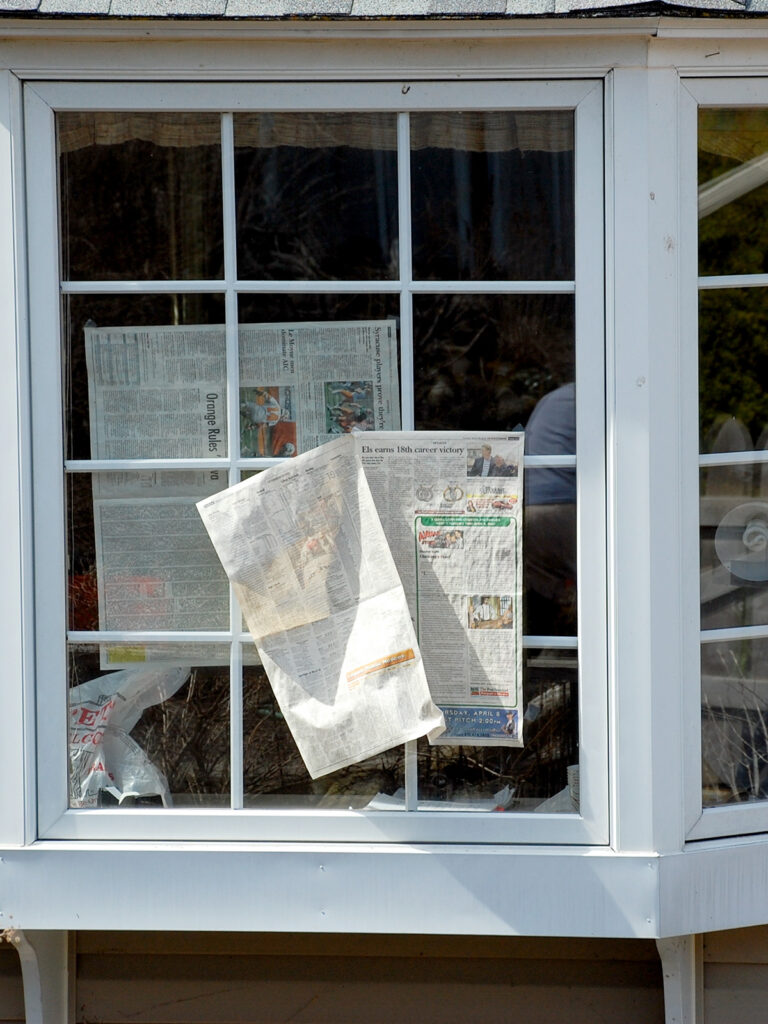
An occasional problem has been male robins attacking our windows, thinking their reflection was a competitor. This happens only some years and only for a week or two in the spring as robins are establishing their territory.
Neither the windows nor the robins have been injured, but it can be distressing to see and hear. We’ve found that simply taping some newspapers to the windows solved the problem. (Pretty ugly, but it’s only for a week or two…)
Protecting birds from pipes
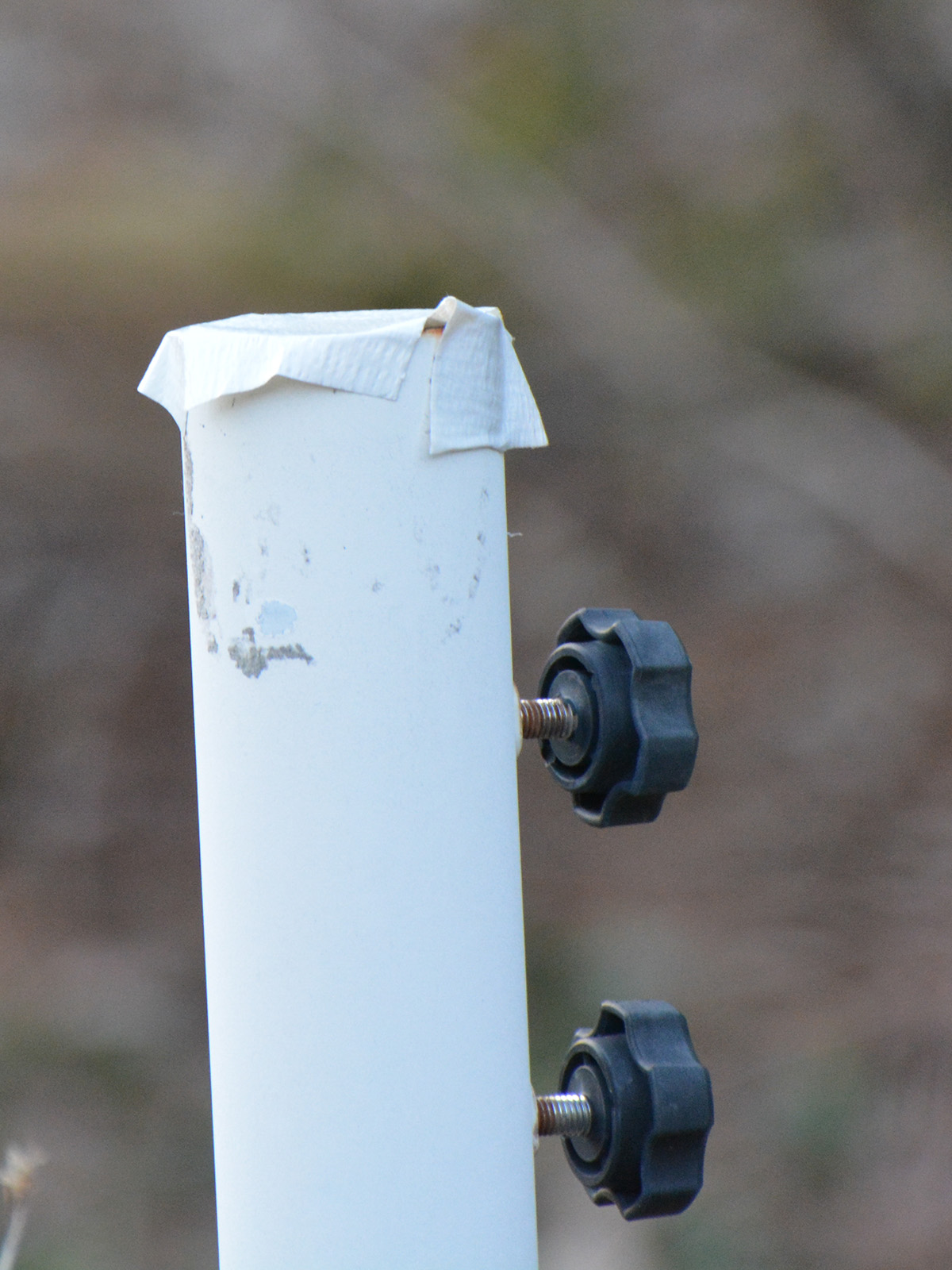
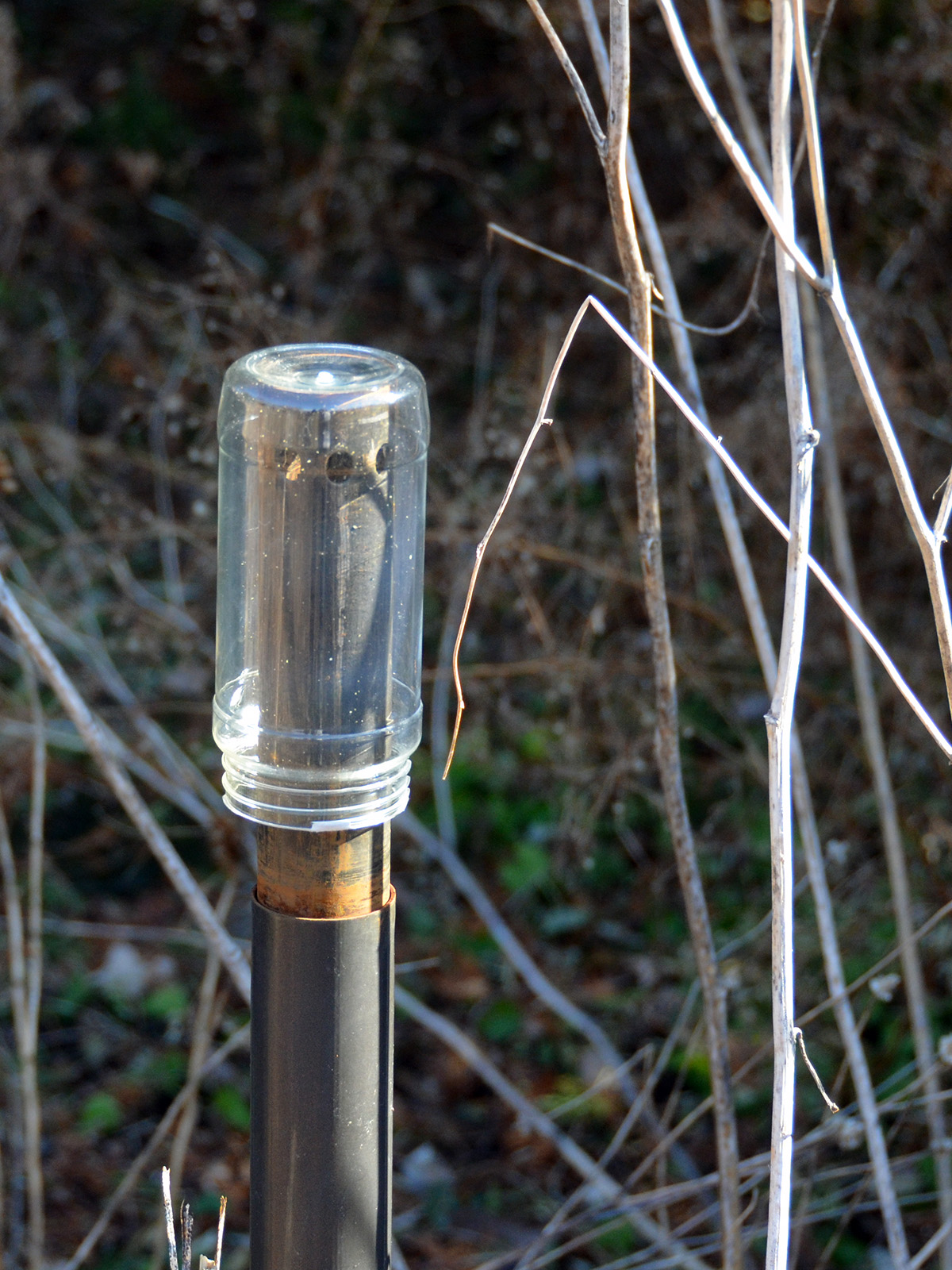
We haven’t had the problem of birds getting caught in a pipe (described in the Resources Miscellaneous section below) but we do leave the base of our umbrella stand outside over the winter, so we make sure we keep it covered.
The first year we taped the top with duct tape. It worked okay, but we were left with a sticky pipe. Since then, we’ve used either an old tall, thin plastic food container or even a glass one such as the olive jar shown above. We haven’t had a problem with the plastic one flying off or the glass one breaking since they go down far enough to stay put.
- Learn more:
- US Fish & Wildlife Service: Death by pipe (see the image above of how we protect birds from this) – Death by pipe: Birds in crisis – the full PDF version
Glue traps for invasive insects
It’s important to eliminate the invasive non-native insects destroying our native trees, BUT we must do this in a way that doesn’t harm birds! Check the NY Audubon resource below.
- Learn more:
Halloween fake spider web
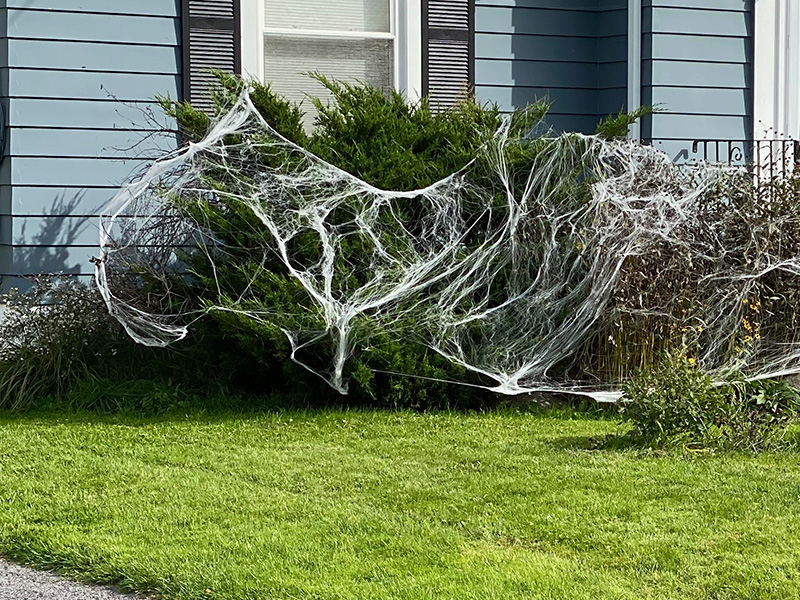
Yes, it’s fun to decorate for Halloween, but this fake spider web can be a death trap for birds, who can get tangled up in it.
- Learn more:
- Hilton Pond: A Halloween Warning – Artificial spider webs can trap birds (includes photo)
- 10WJAR TV: Family rescues woodpecker caught in Halloween decorations
Heat
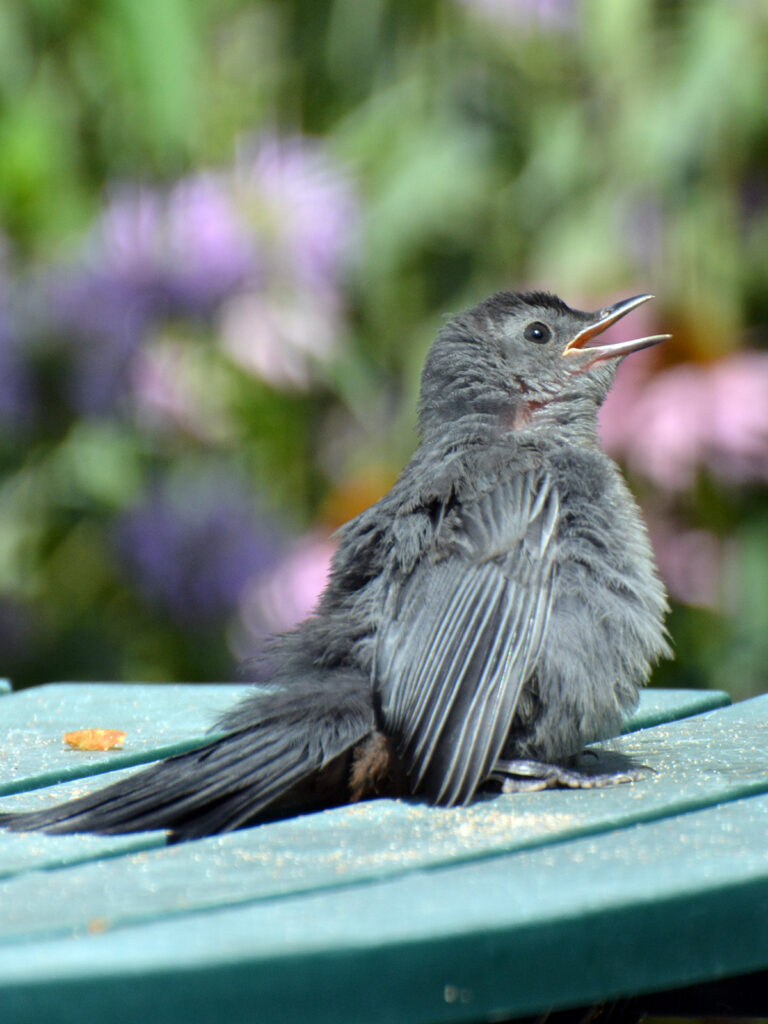
As the climate warms, it’s becoming more difficult for birds in lots of ways.
How do birds “sweat”?
As Cornell’s Lab of Ornithology says: “It’s normal for birds to breathe with an open beak (called “gular fluttering”) when temperatures climb. Resist the urge to provide hands-on help (e.g., don’t attempt to administer fluids to birds, don’t take nestlings inside to “cool off,” etc.), and as always, wait until a box is unoccupied to make adjustments (to avoid stressing young and parents). “
Here are other ways Cornell says we can help nesting birds:
“Many places are experiencing higher-than-normal temperatures right now, and this leads to questions about how to help nesting birds endure the heat, particularly those in nest boxes. Here are our top six suggestions:
- maintain a birdbath nearby if there isn’t a close natural water source
- place nest boxes to receive afternoon shade
- paint nest boxes a light color
- use 1″ thick lumber for nest boxes (avoid thin pieces of wood)
- consider adding a heat shield to your nest box if you expect multiple days over 100°F”
Non-native plants
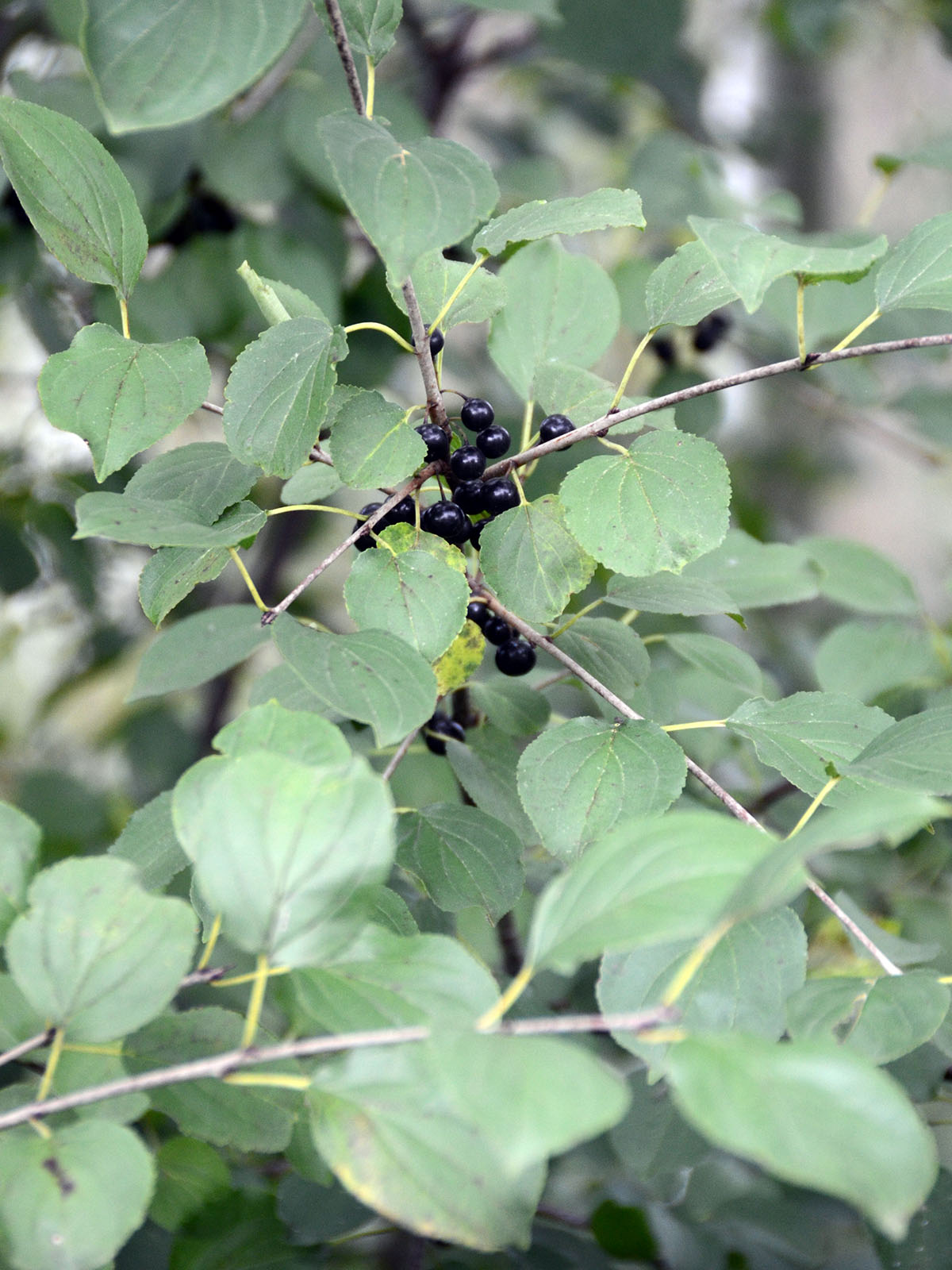
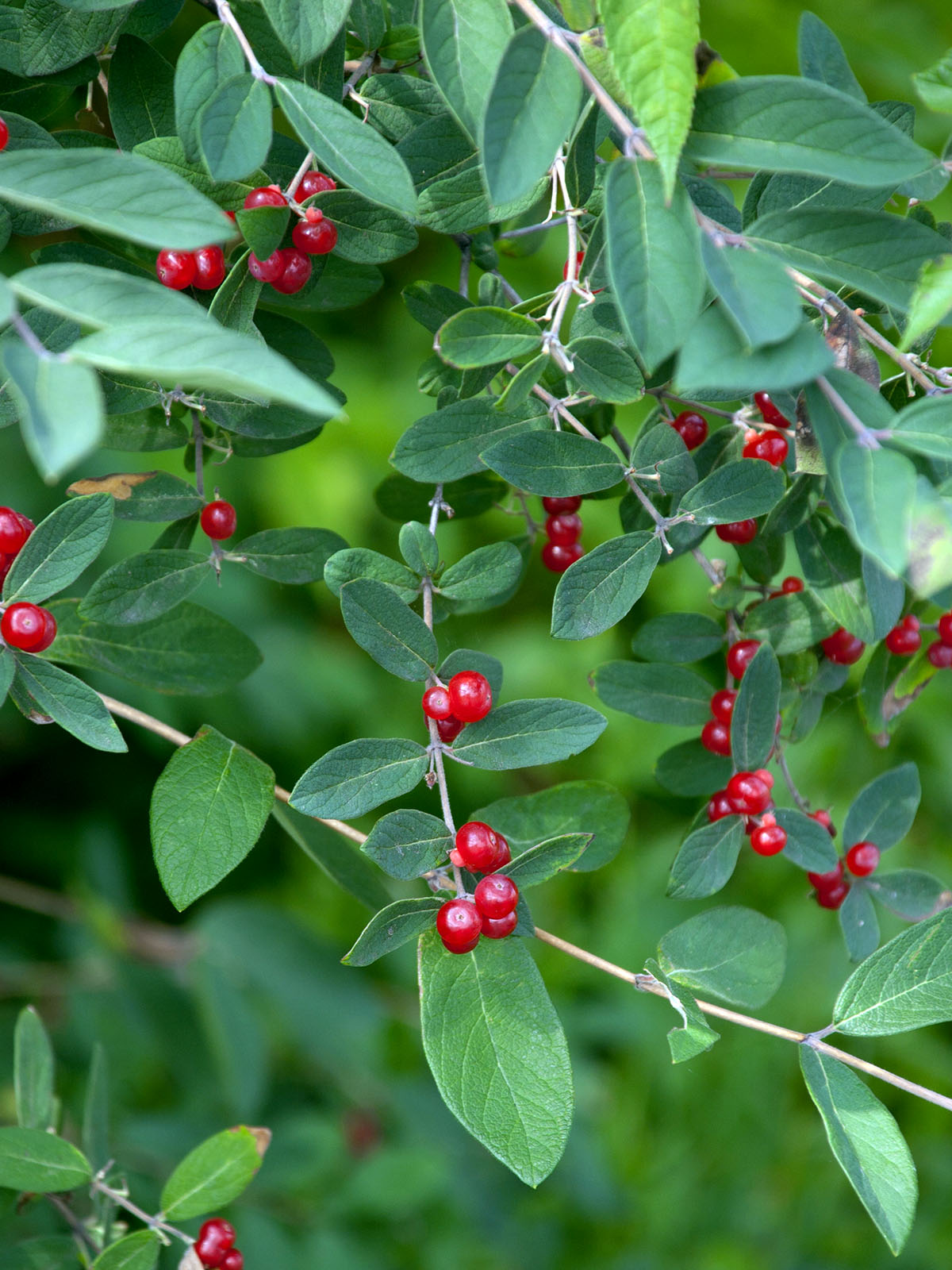
Some non-native plants — apart from invading space that would otherwise grow native plants — are actively harmful to birds. For example, buckthorn berries can make birds sick or even kill them, and non-native berries such as honeysuckle berries can alter feather pigments, giving false signals to potential mates.
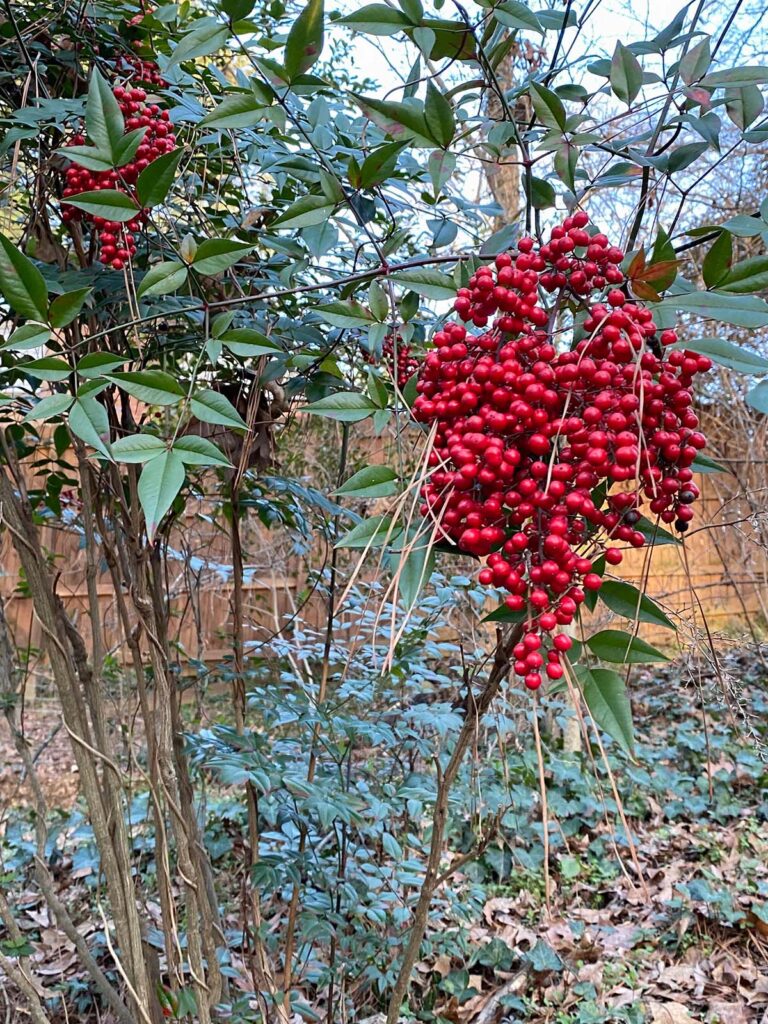
And we’ve seen a lot of non-native nandina in our daughter’s Chapel Hill neighborhood.
It’s common name is “heavenly bamboo” — but it’s not so heavenly for birds (and other animals). It’s high in cyanide and entire flocks of berry-eating birds such as cedar waxwings are killed by this non-native berry the birds didn’t evolve with.
And even worse, it’s still sold in most conventional nurseries and big box stores down there because it’s “pretty.” Pretty is as pretty does,” as my grandmother used to say…
All in all, it’s best to eliminate non-natives and plant natives!
- Learn more:
- NC Botanic Gardens: Nandina fruits can be toxic to birds
- Audubon: Mystery solved: Invasive berries to blame for turning flickers’ feathers pink
Lead in fishing sinkers and in ammunition
When does the kind of sinker fishermen use affect birds? When they’re made of lead!
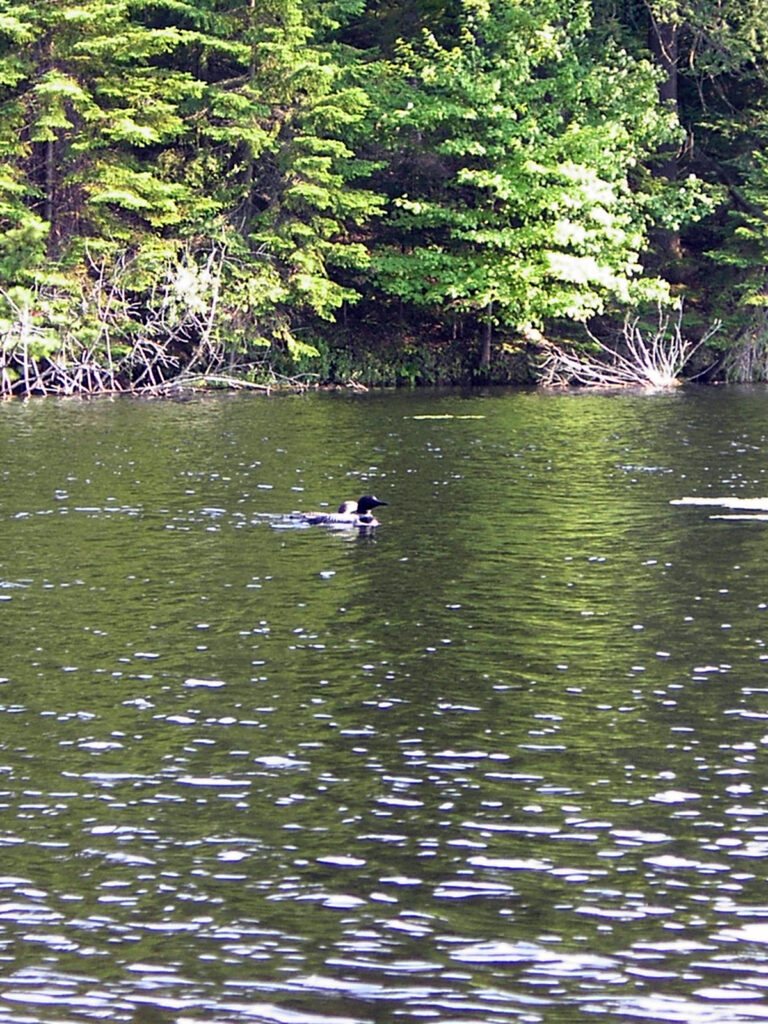
This is an especially critical issue for one of our most beloved birds of the Adirondacks — the loon.
Loons and other waterfowl (including swans, redhead ducks, and others) ingest these sinkers, swallowing them with the minnows attached to lost rigs, mistaking them for prey, or mistaking them for the small stones they ingest to help them grind fish bones.
Birds of prey swallow lead ammunition in dead animals they find and ingest.
In both cases, these birds die horrible deaths.
Fortunately, New York State followed the lead of some other states and has banned some of the sale of lead fishing weights. Unfortunately, though other states such as New Hampshire have banned sinkers weighing less than an ounce, NYS has banned only those weighing less than half an ounce. Why?
BUT nationally, there has been surprising (or maybe not so surprising) opposition to banning lead sinkers and ammunition.
Fishermen can also help keep our forest healthy by NOT dumping their extra bait worms! Read more about this issue.
- Learn more:
- PennState Extension: Non-lead ammo for deer-hunting
- NYS DEC: Lead fishing weights and loons
- Lesley the Bird Nerd: VIDEO: The truly gorgeous with a haunting call: Common loon
- Cornell: Bald eagle rebound stunted by poisoning from lead ammunition
Resources
- Book:
- 101 Ways to Help Birds by Laura Ericson – An excellent description of the many ways you can help birds—not just the usual things, but also more substantive actions
- Smithsonian Institute:
- Audubon Society:
- Conservation information from one of premier bird conservation societies
- Cornell Lab of Ornithology:
- Seven simple actions to help birds – Excellent summary with links to more info
- Risky strategy helps migratory birds offset climate change
- New York Times: (If you’re not a NYT subscriber you may have to google the article title)
- Saving our birds – A century after Martha (the last passenger pigeon) the Cornell Lab remembers the Passenger Pigeon and the conservation movement it inspired
- Three billion canaries in the coal mine – What does it mean for us that birds are dying?
- The crisis for birds is a crisis for us all
- 2/3 for the Birds
- Healthy landscapes, healthy birds, healthy us – Put your name on The List! Sponsors include Cornell Lab, Native Plant Trust, Doug Tallamy, Homegrown National Park
- Saving birds through habitat
- Brochures for helping nesting and migrating birds
Light pollution
- International Dark Sky Association:
- Audubon:
- BirdCast:
- Lights Out during bird migration (and a good idea the rest of the year, too!)
- American Bird Conservancy:
Pesticides
- All About Birds:
- American Bird Conservancy:
- Choose Natives:
- RATS:
- Raptors are the solution – Rat poison kills eagles and owls and even family pets.
- Chris Jordan:
- Silent Spring – Depicts 183,000 birds, equal to the estimated number of birds that die in the US every day from exposure to agricultural pesticides. (click to zoom in/out)
Other issues
- American Bird Conservancy:
- NYC Audubon:
- Urban green roofs for bird conservation (recorded webinar)
Reflections
Birds are indicators of the environment. If they are in trouble, we know we’ll soon be in trouble.
~ Roger Tory Peterson
